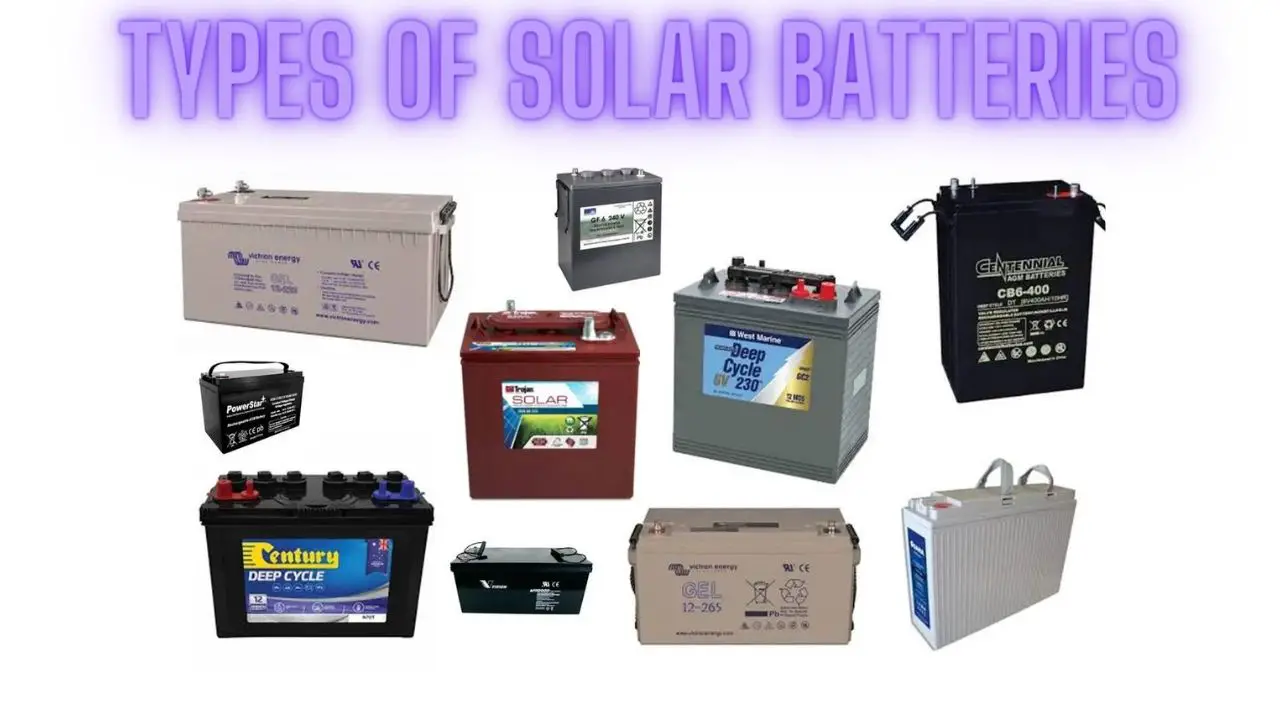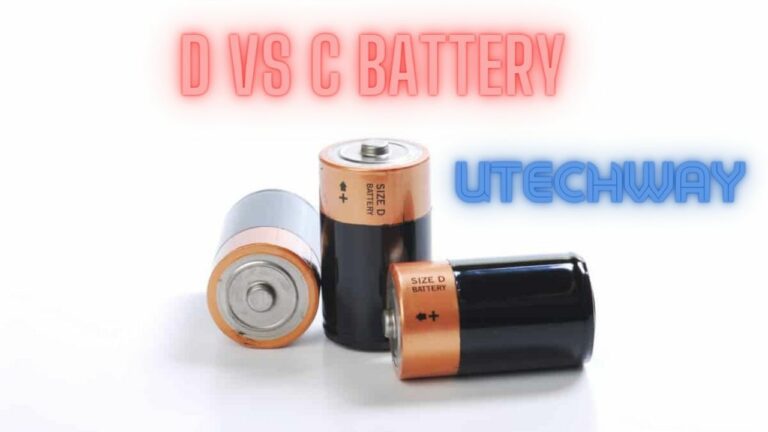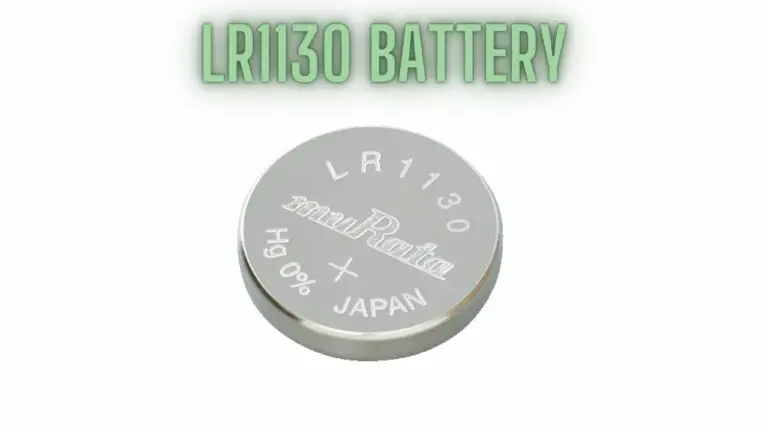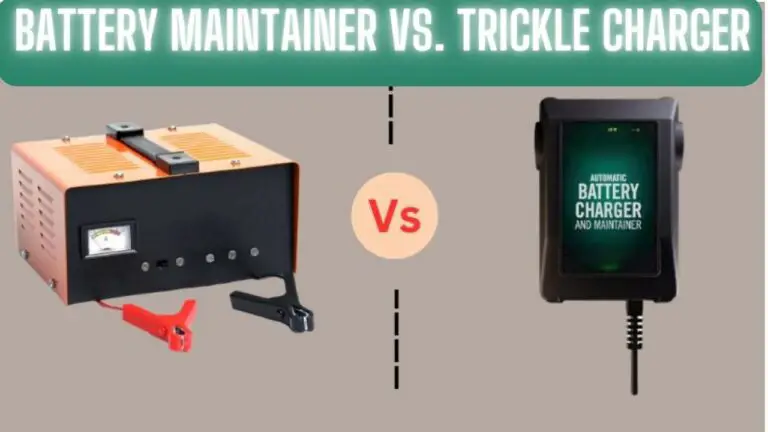Exploring the Different Types of Solar Batteries for Energy Storage
Introduction
As solar energy continues to gain momentum as a sustainable and renewable power source, the need for effective energy storage solutions becomes increasingly important. Solar batteries play a crucial role in storing excess energy generated by solar panels for later use, especially during periods of low sunlight or high energy demand. Different types of solar batteries offer various benefits and characteristics that cater to specific needs and preferences. In this article, we’ll delve into the various types of solar batteries and their unique features.
1. Lead-Acid Batteries:
Lead-acid batteries are one of the oldest and most widely used types of rechargeable batteries, commonly employed in solar energy storage systems due to their reliability and cost-effectiveness. These batteries consist of lead plates immersed in an electrolyte solution of sulfuric acid and water. Here are the two main types of lead-acid batteries used in solar applications:
- Flooded Lead-Acid Batteries:
- Flooded lead-acid batteries, also known as wet-cell batteries, feature lead plates suspended in a liquid electrolyte solution. The electrolyte is typically a mixture of sulfuric acid and water.
- These batteries require periodic maintenance to check electrolyte levels, top up with distilled water, and prevent the plates from being exposed to air. Overcharging can lead to the release of hydrogen gas, requiring proper ventilation.
- Sealed Lead-Acid Batteries (SLA):
- Sealed lead-acid batteries are maintenance-free and do not require topping up with water. They are sealed to prevent leakage of electrolyte and minimize the risk of spills or accidents.
- There are two main types of sealed lead-acid batteries used in solar applications:
- Absorbent Glass Mat (AGM) Batteries: AGM batteries use glass mat separators to absorb and immobilize the electrolyte, allowing for a spill-proof design. They offer better resistance to vibration, deep discharges, and cycling compared to flooded batteries.
- Gel Batteries: Gel batteries use a gel-like electrolyte that is immobilized within the battery’s casing. This gel electrolyte reduces the risk of electrolyte stratification and minimizes the risk of leakage or spillage. Gel batteries are known for their high cycle life and excellent performance in deep-cycle applications.
Lead-acid batteries are known for their robustness, affordability, and wide availability, making them popular choices for off-grid and grid-tied solar energy storage systems. However, they have limitations in terms of energy density, depth of discharge, and lifespan compared to other types of batteries such as lithium-ion and flow batteries. Despite these limitations, lead-acid batteries remain a viable option for many solar applications, especially in areas where cost-effectiveness and reliability are paramount.
2. Lithium-Ion Batteries:
Lithium-ion (Li-ion) batteries are a type of rechargeable battery known for their high energy density, lightweight design, and long cycle life. They have become increasingly popular in solar energy storage systems due to their superior performance and efficiency compared to traditional lead-acid batteries. Several types of lithium-ion batteries are used in solar applications, each offering unique advantages and characteristics. Here are some of the most common types:
- Lithium Iron Phosphate (LiFePO4) Batteries:
- LiFePO4 batteries are known for their high energy density, long cycle life, and excellent thermal stability. They are less prone to overheating and thermal runaway compared to other lithium-ion chemistries, making them safer and more reliable.
- These batteries are well-suited for solar energy storage applications due to their high charge and discharge efficiency, wide operating temperature range, and resistance to overcharging and overdischarging.
- Lithium Nickel Manganese Cobalt Oxide (NMC) Batteries:
- NMC batteries offer a balance between energy density, power density, and cost-effectiveness. They are widely used in various applications, including solar energy storage, electric vehicles, and portable electronics.
- NMC batteries typically have higher energy density and longer cycle life compared to other lithium-ion chemistries, making them suitable for residential and commercial solar installations.
- Lithium Nickel Cobalt Aluminum Oxide (NCA) Batteries:
- NCA batteries are known for their high energy density and power output, making them ideal for high-performance applications such as electric vehicles and grid-scale energy storage.
- These batteries offer excellent energy efficiency and fast charging capabilities, but they may have a shorter cycle life compared to other lithium-ion chemistries.
- Lithium Titanate (LTO) Batteries:
- LTO batteries are known for their exceptional cycle life, rapid charging capabilities, and wide temperature tolerance. They are often used in applications requiring frequent charge and discharge cycles, such as solar energy storage and electric vehicles.
- LTO batteries have a lower energy density compared to other lithium-ion chemistries but offer superior safety, reliability, and lifespan.
Lithium-ion batteries offer several advantages over traditional lead-acid batteries, including higher energy density, faster charging, longer cycle life, and lower maintenance requirements. However, they are typically more expensive upfront, which may deter some users. Despite the higher initial cost, lithium-ion batteries can provide significant long-term savings and performance benefits in solar energy storage applications.
3. Nickel-Cadmium Batteries:
Nickel-Cadmium (NiCd) batteries are a type of rechargeable battery known for their robustness, long cycle life, and resistance to overcharging and overdischarging. They have been widely used in various applications, including portable electronics, power tools, emergency lighting, and backup power systems. Despite being less common in modern applications due to environmental concerns and the availability of newer battery technologies, NiCd batteries still offer certain advantages in specific use cases. Here are some key characteristics of NiCd batteries:
- Chemistry: NiCd batteries use nickel oxide hydroxide (NiOOH) as the positive electrode (cathode), cadmium (Cd) as the negative electrode (anode), and potassium hydroxide (KOH) as the electrolyte. During charging, cadmium ions are oxidized at the negative electrode, and nickel hydroxide is reduced at the positive electrode. During discharging, the reverse reaction occurs, generating electrical energy.
- Advantages:
- Long Cycle Life: NiCd batteries are known for their long cycle life, capable of enduring thousands of charge and discharge cycles without significant degradation in performance.
- High Discharge Rate: NiCd batteries can deliver high discharge currents, making them suitable for applications requiring high power output, such as power tools and emergency lighting.
- Resilience to Overcharging: NiCd batteries are less sensitive to overcharging compared to other battery chemistries, making them suitable for applications where overcharging may occur inadvertently.
- Drawbacks:
- Memory Effect: NiCd batteries are susceptible to the memory effect, a phenomenon where the battery’s capacity is reduced if it is repeatedly charged after only partial discharge. This effect can be mitigated by fully discharging and recharging the battery periodically.
- Environmental Concerns: Cadmium, a toxic heavy metal, is used in NiCd batteries, raising environmental and health concerns. Proper disposal and recycling of NiCd batteries are necessary to prevent cadmium contamination.
- Lower Energy Density: NiCd batteries have lower energy density compared to newer battery technologies such as lithium-ion, limiting their application in portable electronics where size and weight are critical factors.
Despite these drawbacks, NiCd batteries remain in use in certain applications where their specific advantages outweigh their limitations. However, their usage has declined in favor of newer battery technologies such as lithium-ion, which offer higher energy density, lower environmental impact, and improved performance in many applications.
4. Flow Batteries:
Flow batteries are a type of rechargeable battery that store energy in two electrolyte solutions separated by a membrane. Unlike conventional batteries where energy is stored within the electrodes, flow batteries store energy in external tanks, allowing for scalable and flexible energy storage solutions. Flow batteries are well-suited for large-scale energy storage applications, including grid stabilization, renewable energy integration, and backup power systems. Here are some common types of flow batteries used in various applications:
- Vanadium Redox Flow Batteries (VRFB):
- VRFBs use vanadium-based electrolytes, typically vanadium pentoxide (V5+) and vanadium(II) or vanadium(III) ions, dissolved in sulfuric acid solution. These electrolytes flow through separate tanks and are circulated through the cell stack during charging and discharging.
- VRFBs offer high energy efficiency, rapid response times, and long cycle life, making them suitable for grid-scale energy storage and renewable energy integration projects.
- Zinc-Bromine Flow Batteries:
- Zinc-bromine flow batteries use zinc and bromine-based electrolytes, with zinc ions plated onto a negative electrode (zinc) and bromine ions dissolved in an aqueous solution as the positive electrode. During charging, zinc ions are deposited onto the negative electrode, and bromine is reduced to bromide ions at the positive electrode.
- Zinc-bromine flow batteries offer high energy density, low cost, and scalability, making them attractive for grid-scale energy storage and remote power applications.
- Iron-Chromium Flow Batteries:
- Iron-chromium flow batteries use iron and chromium-based electrolytes, typically iron(II) or iron(III) and chromium(III) ions, dissolved in acidic solutions. These electrolytes flow through separate tanks and are pumped through the cell stack during charging and discharging.
- Iron-chromium flow batteries offer advantages such as high energy efficiency, low cost, and long cycle life, making them suitable for stationary energy storage applications and renewable energy integration projects.
Flow batteries offer several advantages over traditional lithium-ion and lead-acid batteries, including scalability, flexibility, and long cycle life. They can be easily scaled up or down by adding or removing electrolyte storage tanks, making them suitable for a wide range of applications from residential to utility-scale energy storage projects. Additionally, flow batteries are known for their deep cycling capabilities, allowing for frequent charge and discharge cycles without significant degradation in performance or lifespan.
5. Sodium-Sulfur (NaS) Batteries
Sodium-sulfur (NaS) batteries are a type of high-temperature rechargeable battery known for their high energy density, long cycle life, and efficient energy storage capabilities. These batteries use molten sodium as the negative electrode (anode), molten sulfur as the positive electrode (cathode), and a solid ceramic electrolyte separator to conduct sodium ions between the electrodes. Here are some key characteristics of sodium-sulfur batteries:
- Chemistry: NaS batteries operate at high temperatures (typically around 300 to 350°C) to keep the sodium and sulfur in molten states, allowing for efficient ion transport and electrochemical reactions. During charging, sodium ions migrate from the sodium electrode to the sulfur electrode, where they combine with sulfur to form sodium polysulfide. During discharging, the reverse reaction occurs, releasing electrical energy.
- High Energy Density: NaS batteries offer high energy density, making them suitable for applications requiring large-scale energy storage, such as grid stabilization, renewable energy integration, and electric grid backup systems. Their high energy density allows for compact and efficient energy storage solutions.
- Long Cycle Life: NaS batteries are known for their long cycle life, capable of enduring thousands of charge and discharge cycles without significant degradation in performance. This longevity makes them suitable for stationary energy storage applications where reliability and durability are paramount.
- Fast Charging and Discharging: NaS batteries can charge and discharge rapidly, allowing for efficient energy storage and retrieval when needed. Their fast response times make them suitable for applications requiring frequent charge and discharge cycles, such as grid stabilization and peak shaving.
- High Operating Temperature: NaS batteries operate at high temperatures, which can pose challenges in terms of thermal management and safety. Proper insulation and temperature control systems are necessary to maintain the batteries at the optimal operating temperature range and prevent overheating or thermal runaway.
- Safety Considerations: The high operating temperature and chemical reactivity of molten sodium and sulfur present safety considerations for NaS batteries. Accidental exposure to air or moisture can lead to chemical reactions and release of hazardous gases. Proper containment and safety protocols are essential to prevent accidents and ensure safe operation of NaS battery systems.
Despite these challenges, sodium-sulfur batteries offer significant advantages in terms of energy density, cycle life, and efficiency, making them attractive for large-scale energy storage applications. Ongoing research and development efforts aim to improve the safety, reliability, and cost-effectiveness of NaS battery technology for broader adoption in renewable energy and grid stabilization initiatives.
6. Saltwater Batteries:
Saltwater batteries, also known as saltwater flow batteries or aqueous hybrid ion batteries, are a type of rechargeable battery that utilizes saltwater electrolytes to store and release energy. These batteries offer several advantages, including environmental friendliness, safety, and scalability. Here are some key characteristics of saltwater batteries:
- Chemistry: Saltwater batteries use saltwater electrolytes (typically a saline solution of sodium chloride or potassium chloride) as the electrolyte medium. The electrodes are usually made of carbon-based materials such as carbon felt or carbon paper, which are inert and environmentally benign.
- Operation: Saltwater batteries operate on a similar principle to other flow battery systems, where energy is stored in the form of electrolytes in external tanks and then circulated through the cell stack during charging and discharging. During charging, ions in the electrolyte solution are transferred between the electrodes, storing energy. During discharging, the ions flow back through the cell stack, releasing energy.
- Safety: Saltwater batteries are inherently safer than many other battery chemistries due to the non-toxic and non-flammable nature of their electrolytes. Unlike lithium-ion batteries, which can pose fire risks if damaged or improperly handled, saltwater batteries are considered safer and more environmentally friendly.
- Environmental Friendliness: Saltwater batteries are considered environmentally friendly because they do not contain toxic heavy metals or hazardous chemicals. They are non-toxic, non-corrosive, and easily recyclable, minimizing their environmental impact throughout their lifecycle.
- Scalability: Saltwater batteries offer scalability and flexibility in energy storage applications. Additional electrolyte tanks can be added to increase energy storage capacity, allowing for customizable and modular energy storage solutions tailored to specific power requirements.
- Cost-Effectiveness: Saltwater batteries are relatively cost-effective compared to other battery technologies, such as lithium-ion or flow batteries. The use of abundant and inexpensive materials, coupled with simple manufacturing processes, contributes to their cost competitiveness.
- Applications: Saltwater batteries are suitable for a wide range of applications, including residential energy storage, grid stabilization, renewable energy integration, and off-grid power systems. Their safety, reliability, and environmental friendliness make them attractive for both small-scale and large-scale energy storage projects.
While saltwater batteries offer several advantages, they also have limitations, including lower energy density compared to some other battery chemistries and limited power output. Despite these limitations, saltwater batteries continue to gain popularity as an environmentally friendly and cost-effective energy storage solution for various applications. Ongoing research and development efforts aim to further improve the performance and scalability of saltwater battery technology for broader adoption in the renewable energy sector.
7. Hybrid Batteries:
Hybrid batteries refer to batteries used in hybrid electric vehicles (HEVs) and plug-in hybrid electric vehicles (PHEVs). These vehicles combine an internal combustion engine (ICE) with an electric propulsion system, utilizing both gasoline or diesel fuel and electricity for propulsion. Hybrid batteries play a crucial role in storing and delivering electrical energy for powering the electric motor and providing additional power when needed. Here are key aspects of hybrid batteries:
- Composition: Hybrid batteries typically consist of multiple cells connected in series or parallel to form a battery pack. These cells are usually lithium-ion or nickel-metal hydride (NiMH) batteries, chosen for their energy density, power output, and cycle life.
- Function: Hybrid batteries store electrical energy generated through regenerative braking and excess engine power during operation. This stored energy is then used to assist the internal combustion engine during acceleration, provide electric-only propulsion at low speeds, and power auxiliary systems when the engine is off (idle stop).
- Lithium-Ion Batteries: Many modern hybrid vehicles use lithium-ion batteries due to their higher energy density, lighter weight, and superior performance compared to NiMH batteries. Lithium-ion batteries offer greater efficiency and longer lifespan, contributing to improved fuel economy and reduced emissions in hybrid vehicles.
- Nickel-Metal Hydride (NiMH) Batteries: NiMH batteries were commonly used in earlier generations of hybrid vehicles and continue to be utilized in some models today. While NiMH batteries have lower energy density and efficiency compared to lithium-ion batteries, they are known for their reliability, durability, and lower cost.
- Packaging and Cooling: Hybrid battery packs are typically housed in a dedicated compartment within the vehicle, often located under the rear seat or in the trunk area. These packs are equipped with cooling systems, such as fans or liquid cooling loops, to maintain optimal operating temperatures and ensure battery longevity.
- Management System: Hybrid battery packs incorporate sophisticated battery management systems (BMS) to monitor cell voltage, temperature, and state of charge (SOC). The BMS regulates charging and discharging processes, prevents overcharging and overdischarging, and manages thermal conditions to optimize battery performance and lifespan.
- Regenerative Braking: Hybrid vehicles utilize regenerative braking systems to capture kinetic energy during deceleration and braking, converting it into electrical energy to recharge the battery. This energy recovery process improves overall fuel efficiency and reduces brake wear and tear.
- Plug-In Hybrid Batteries: Plug-in hybrid electric vehicles (PHEVs) feature larger battery packs compared to conventional hybrids, allowing for extended electric-only driving range. These batteries can be recharged by plugging the vehicle into an external power source, such as a wall outlet or charging station.
Hybrid batteries represent a critical component of hybrid electric vehicles, enabling efficient energy storage and utilization of electric propulsion alongside conventional internal combustion engines. Ongoing advancements in battery technology aim to improve energy density, efficiency, and lifespan, further enhancing the performance and viability of hybrid vehicles in the automotive market.
Understanding of solar batteries
Solar batteries are energy storage devices specifically designed to capture and store electricity generated by solar panels or photovoltaic (PV) systems. They play a vital role in maximizing the efficiency and usefulness of solar power by allowing excess energy generated during sunny periods to be stored for later use when the sun isn’t shining, such as during nighttime or cloudy days. Understanding how solar batteries work and their importance can help individuals make informed decisions about incorporating them into their solar energy systems.
Key Concepts about Solar Batteries:
1. Energy Storage: Solar batteries store the surplus energy generated by solar panels. This stored energy can be used when the sun isn’t providing enough power, ensuring a consistent and reliable energy supply.
2. Depth of Discharge (DOD): The depth of discharge refers to the amount of energy taken out of the battery compared to its total capacity. It’s important not to discharge a battery too deeply, as it can affect its lifespan. Some batteries have a higher DOD capability than others.
3. Battery Capacity: Battery capacity refers to the total amount of energy a battery can store. It’s usually measured in ampere-hours (Ah) or kilowatt-hours (kWh). The higher the capacity, the more energy the battery can store.
4. Cycle Life: Cycle life refers to the number of charge and discharge cycles a battery can undergo before its capacity significantly decreases. It’s an important factor to consider when evaluating the lifespan of a battery.
5. Efficiency: Efficiency refers to the ratio of the amount of energy that can be taken out of the battery compared to the energy put into it. The efficiency of a battery determines how much energy is lost during the charging and discharging process.
6. Battery Management Systems (BMS): Many modern solar batteries come with built-in battery management systems that monitor and manage the battery’s performance. BMS helps optimize charging and discharging cycles, prevent overcharging or deep discharge, and enhance overall battery life.
Benefits of Solar Batteries:
1. Energy Independence: Solar batteries enable homeowners and businesses to store excess solar energy and use it when needed, reducing reliance on grid power and promoting energy independence.
2. Energy Cost Savings: By storing and utilizing solar energy during peak demand or when grid electricity rates are high, solar battery users can save on their energy bills.
3. Backup Power: Solar batteries provide a source of backup power during power outages, ensuring essential appliances and systems continue to function even when the grid is down.
4. Load Shifting: Solar battery systems allow for load shifting, where energy generated during the day can be stored and used during evening hours, optimizing energy consumption patterns.
5. Grid Support: Solar batteries can also play a role in stabilizing the grid by reducing peak demand and providing stored energy during times of high electricity consumption.
Factors to Look When Picking A Solar Battery
When selecting a solar battery for your energy storage needs, several important factors should be taken into consideration. The right choice depends on your specific requirements, budget, and goals. Here are key factors to consider when picking a solar battery:
1. Battery Chemistry: Different battery chemistries offer varying performance characteristics, including cycle life, efficiency, and cost. Common options include lithium-ion (Li-ion), lead-acid, flow batteries, and more. Research the pros and cons of each chemistry to determine which aligns best with your needs.
2. Capacity and Power Rating: Capacity refers to the amount of energy a battery can store, typically measured in kilowatt-hours (kWh). The power rating, measured in kilowatts (kW), indicates how much energy the battery can deliver at a given time. Choose a battery with a capacity and power rating that meets your daily energy consumption and peak power requirements.
3. Depth of Discharge (DOD): DOD refers to the percentage of a battery’s capacity that can be used before it’s recharged. Batteries with a higher DOD provide more usable capacity and flexibility in energy management.
4. Cycle Life and Warranty: Cycle life is the number of charge-discharge cycles a battery can undergo before its capacity significantly decreases. A longer cycle life is desirable for maximizing the battery’s lifespan. Check the warranty offered by the manufacturer, which often correlates with cycle life.
5. Efficiency: Efficiency indicates how much energy is lost during the charging and discharging process. Higher efficiency means more of the stored energy can be used. Consider both charging and discharging efficiency when evaluating battery options.
6. Physical Size and Installation: Ensure the battery’s physical dimensions fit the available space for installation. Some batteries are modular and can be expanded, while others are fixed in size. Additionally, consider the weight and mounting requirements of the battery.
7. Compatibility with Solar System: Check if the battery is compatible with your existing solar system and inverter. Some batteries are designed to work seamlessly with specific inverters or brands, while others offer more flexibility.
8. Scalability: If you plan to expand your solar system in the future, choose a battery that can be easily scaled up by adding additional units.
9. Safety Features: Look for safety features such as built-in battery management systems (BMS) that protect against overcharging, deep discharging, and thermal issues. Safety certifications and standards are also important indicators.
10. Cost and Value: Consider the upfront cost, including the battery itself, installation, and any additional components. Balance the cost with the value the battery provides in terms of energy savings, backup power, and increased energy independence.
11. Manufacturer Reputation: Research the manufacturer’s reputation for quality, reliability, and customer support. Established manufacturers often have a track record of delivering dependable products.
12. Environmental Impact: Consider the environmental impact of the battery’s production, use, and disposal. Some battery chemistries are more eco-friendly than others.
13. Maintenance Requirements: Understand the maintenance needs of the chosen battery, including periodic checks and replacements. Some batteries require minimal maintenance, while others may need more attention.
By carefully considering these factors, you can make an informed decision and choose a solar battery that aligns with your energy goals, budget, and long-term sustainability objectives. Consulting with solar energy professionals can provide further guidance tailored to your specific situation.
Solar Batteries FAQS
What is a solar battery?
A solar battery is an energy storage device that stores excess electricity generated by solar panels during sunny periods. It allows homeowners and businesses to use stored energy during periods of low sunlight or high energy demand.
How do solar batteries work?
Solar batteries store electricity generated by solar panels in the form of chemical energy. This stored energy can be used later when the solar panels are not producing enough power, such as at night or during cloudy days. The stored energy is converted back to electrical energy for use in homes or businesses.
What are the benefits of using solar batteries?
Solar batteries offer several benefits, including:
- Energy independence: Reduced reliance on grid electricity.
- Energy cost savings: Use stored energy during peak demand or high-rate periods.
- Backup power: Provide power during grid outages.
- Load shifting: Store energy generated during the day for use during the evening.
What types of batteries are used for solar energy storage?
Common types of batteries used for solar energy storage include lithium-ion, lead-acid, flow batteries, and saltwater batteries. Each type has its own characteristics, advantages, and disadvantages.
How long do solar batteries last?
The lifespan of a solar battery depends on factors such as the battery chemistry, depth of discharge, temperature conditions, and maintenance. Lithium-ion batteries typically have a longer lifespan than lead-acid batteries, ranging from 10 to 20 years or more.
Can I retrofit a solar battery to an existing solar system?
Yes, in many cases, solar batteries can be added to existing solar systems. However, compatibility with the existing inverter and system configuration should be considered.
Can solar batteries be charged from the grid?
Yes, some solar batteries can be charged from the grid during periods of low electricity rates, and the stored energy can be used during peak rate periods or during power outages.
How do I determine the right size of solar battery for my needs?
To determine the right size of a solar battery, consider your daily energy consumption, the energy output of your solar panels, and your energy usage patterns. A professional solar installer can help you size the battery appropriately.
Do solar batteries require maintenance?
The maintenance requirements of solar batteries vary depending on the type and manufacturer. Some batteries require minimal maintenance, while others may need periodic checks and replacements of certain components.
Can I install solar batteries myself?
While some batteries may be designed for DIY installation, it’s recommended to have a professional installer handle the installation. Proper installation ensures safety, optimal performance, and adherence to local regulations.
Are solar batteries environmentally friendly?
Solar batteries can be environmentally friendly depending on the battery chemistry used. Some chemistries, like lithium-ion, have a lower environmental impact compared to lead-acid batteries. However, it’s important to consider the entire lifecycle of the battery, including production and disposal.
Can I use solar batteries off-grid?
Yes, solar batteries are commonly used in off-grid systems to store excess energy generated by solar panels for use when there is no sunlight. These systems are often combined with solar panels, inverters, and backup generators for a reliable power supply.
Conclusion:
The choice of solar battery type depends on factors such as budget, energy requirements, available space, and desired lifespan. As technology advances and environmental concerns grow, newer and more efficient solar battery options continue to emerge. Regardless of the type, solar batteries play a crucial role in maximizing the benefits of solar energy by enabling storage and utilization of clean and renewable power, even when the sun isn’t shining.








